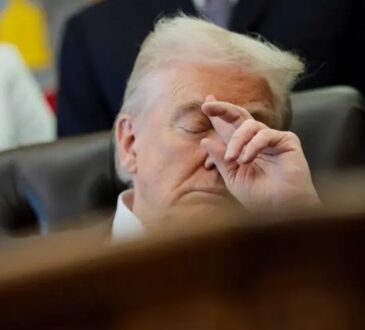
Donald Trump’s chosen prosecutor, Lindsey Halligan, is facing serious criticism after she tried to fix a mistake in court and may have made the situation even worse for herself and her case.
Halligan used to be one of Trump’s personal lawyers. Trump later pushed her into a powerful role as the interim U.S. attorney for the Eastern District of Virginia. She is now leading the criminal case against former FBI Director James Comey. Because of that, a lot of people are already watching her very closely and questioning whether the case is fair or politically motivated.
Comey has been charged with making false statements and obstructing Congress over his 2020 Senate testimony about the FBI’s investigation into Russia. He has pleaded not guilty and says the Justice Department is just doing Trump’s dirty work and trying to punish one of the president’s critics.
The big trouble for Halligan started with a major mistake her own team made in court. During a hearing, one of the prosecutors admitted that the final two-count indictment against Comey had never actually been shown to the full grand jury. This was a huge issue because, under normal rules, the grand jury is supposed to see and vote on the indictment they are approving.
The judge wanted to be absolutely clear about what happened. He asked the government whether the current indictment “is a document that was never shown to the entire grand jury or presented in the grand jury room.” One of the prosecutors replied, “Yes, that is my understanding.” That answer shocked legal observers and gave Comey’s defense team a powerful new argument to attack the case.
Realizing how bad that sounded, the Justice Department tried to undo the damage the very next day. In a new court filing, prosecutors claimed that an “official transcript” from an earlier proceeding proved that the grand jury had actually voted on the indictment and had “true billed” it. They said the earlier courtroom admission was just a misunderstanding and tried to walk it back.
But according to national trial lawyer and Legal AF host Michael Popok, this so-called fix only made things worse. He argued that the new filing “didn’t help matters. It actually made it worse.” Popok said that the government submitted only a small piece of the grand jury transcript—about seven minutes—and used it to suggest everything was fine. In his view, that small slice of the record doesn’t save them at all; instead, it gives the defense more to work with and highlights the confusion.
Popok explained that by choosing to file selected pages from the grand jury transcript, Halligan’s office opened a new door for Comey’s defense team. Now, Comey’s lawyers can argue that since part of the transcript has already been made public in the case, they should be allowed to see the full grand jury record. The Legal AF description of his podcast episode puts it bluntly, saying Halligan’s office “just screwed up again” by filing a transcript that “hurts not helps” their attempts to keep the indictment alive, and that they may have also given up the right to argue that the defense should not get the full grand jury materials.
Popok also said the filing makes Halligan look “hopelessly confused,” including at the last court hearing. In his view, the judge who is deciding whether Halligan should even keep her job as U.S. attorney now has even more reasons to question her judgment and competence.
A magistrate judge has already found serious problems in how the investigation was handled and has ordered that the grand jury materials be turned over to the defense. That kind of order is rare, and the Justice Department is currently trying to fight it on appeal. But by voluntarily filing part of the transcript to support their side, prosecutors may have weakened their own position. The court could now decide that since secrecy has already been broken, fairness requires that the rest of the transcript be shared as well.
Comey’s lawyers have long said that this case is an “egregious abuse of power.” They argue that Trump has repeatedly demanded that his enemies be targeted, while people close to him who were accused of similar behavior were never charged. Now, with Halligan’s mistake and her attempted “cleanup” filing, the defense has new material to support their claim that the case is not only political, but also badly handled on a procedural level.
In simple terms, the situation looks like this: the prosecution admitted something in court that made their case look weak, then tried to take it back with a rushed filing that, according to at least one legal expert, only created more problems. Instead of calming the storm, Halligan’s effort to fix the mistake may have raised fresh doubts about the strength and fairness of the entire prosecution.




